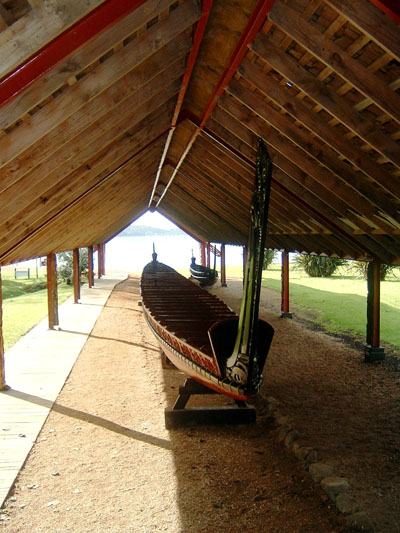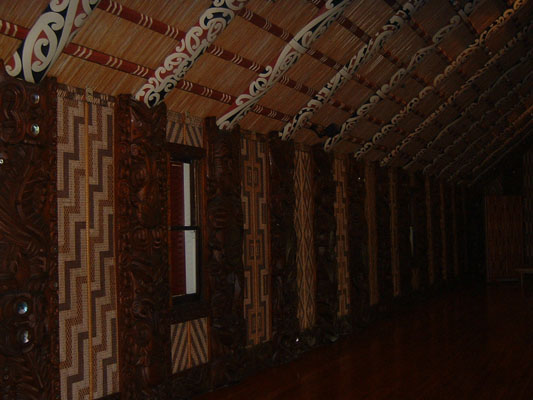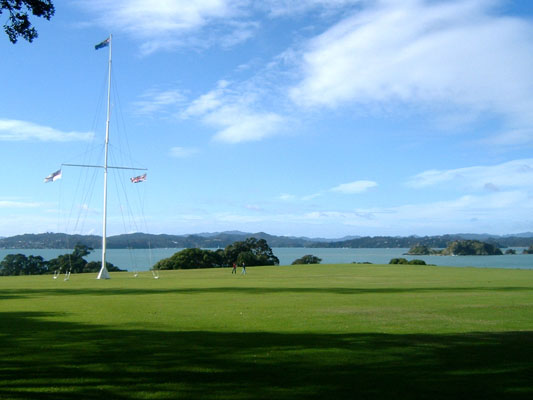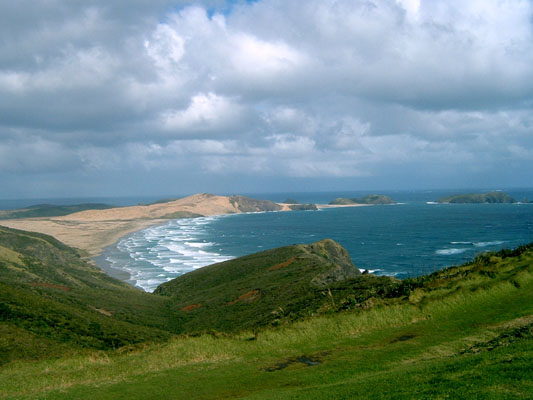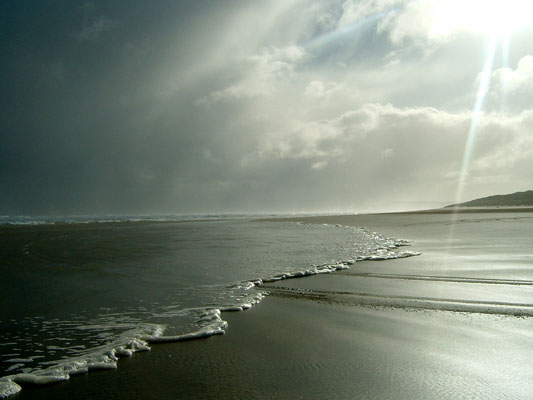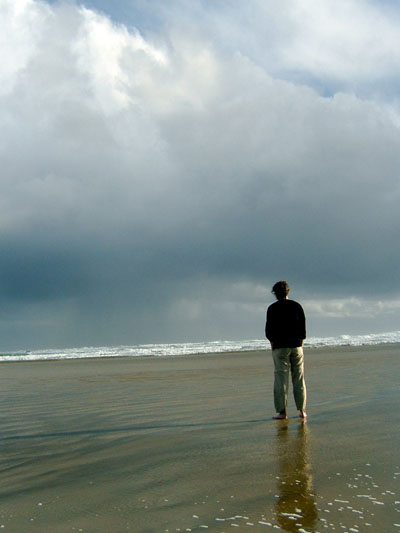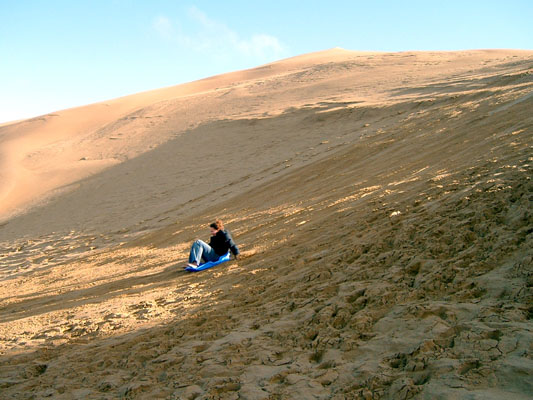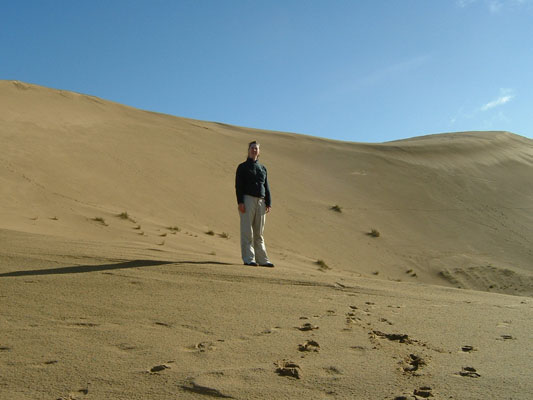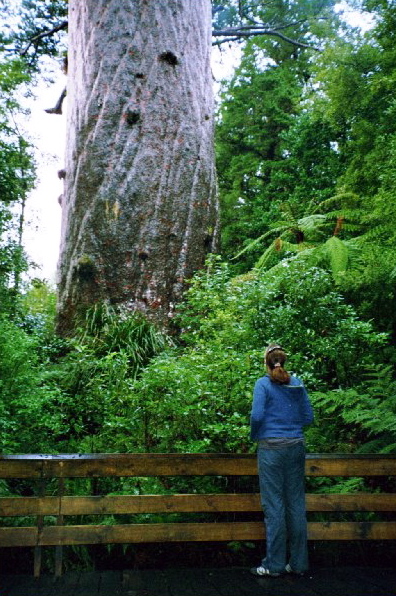Waitangi is, if you believe the hype and the multi-media presentations, the cradle of modern New Zealand. After petitioning Her Majesty for protection, 45 Maori chiefs signed a treaty with Great Britain here in 1840. These events lay the foundation of the relatively good relations between the indigenous and the arriving population that remain to this day. Ngatokimatawhaorua also lives in the Waitangi National Reserve, in a long house by the waterfront. No, this is not the Lord of the Possums, or some such Kiwi flummery, but a fantastic waka or war canoe, modelled after the legendary waka that brought the great chief Kupe to New Zealand. It is 35 metres long, and it is launched once a year, on New Zealand Day, which must be an awesome sight. The little red head is at the very front of the canoe, in the waterline. Below, you can see a fairly poor photo from inside the whare runanga or meeting house - well, it's not so much a house as a work of art you can step into. Meeting houses such as this are used by Maori tribes all over New Zealand to discuss community matters (such as the current conflict over coastal rights, for example) but also have spiritual significance. The other picture shows the lawn in front of British Resident James Busby's house, where the actual treaty negotiations (probably) took place. All these things are part of a thoughtfully created, if somewhat excessively politically correct, museum in the National Reserve. The experience involves a covered walkway where the Maori answer to Simon & Garfunkel is piped at you as you approach the museum doors. |



